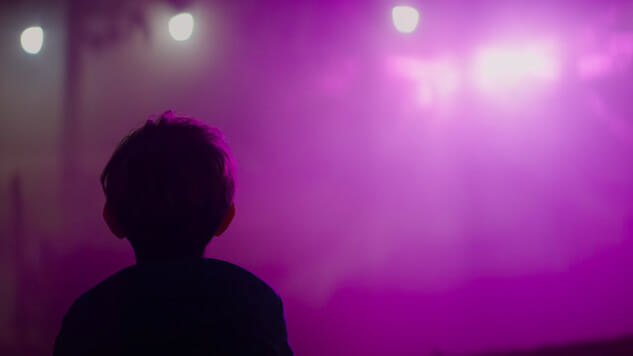Richard Stanley Un-Cages Lovecraftian Weirdness in Color Out of Space

The ways movies can capture the one-of-a-kind bizarre textures of H.P. Lovecraft’s work are limited. Known first as a great author and second as an enthusiastic Hitler stan, Lovecraft imagined his personal fears—particularly of “the masses”—into wholly unimaginable entities, his work so tethered to his pants-wetting neuroses that adapting it for a visual medium feels like a masochist’s chore. That makes Richard Stanley perfect for translating Lovecraft’s short story “The Colour Out of Space” into a feature-length film: The last time he tried making a horror movie it was 1994, and the feature was The Island of Dr. Moreau.
Turning Lovecraft’s words into coherent cinema is a comparative walk in the park, and in Color Out of Space, Stanley gaily strolls ahead with a palette sporting every shade of purple, adding splashes of phlox here and smears of thistle there before coating the screen entirely in heliotrope hues by the end. “Color” is the key word of the movie’s title and the most important tool in Stanley’s work belt: The longer the horror Lovecraft describes on the page endures and infects the world around it, the more vivid Stanley’s imagery becomes. The second most important tool, perhaps expectedly, is Nicolas Cage, starting off the 2020s on the right foot with another Cage-ian horror performance after his stellar work in 2018’s Mandy. If there’s an actor better-suited than Cage for conveying the experience of losing one’s sanity under Lovecraftian duress, the industry hasn’t found them yet.
Cage plays Nathan Gardner, amiable patriarch of the Gardner family, who lives with his wife Theresa (Joely Richardson), daughter Lavinia (Madeleine Arthur), and sons Benny (Brendan Meyer) and Jack (Julian Hilliard) on the family estate where Nathan grew up, in the boonies of Arkham, Massachusetts. Don’t let his last name fool you: Nathan isn’t the farmer type, though he gamely tries his hand at growing crops of heirloom tomatoes and peaches, and he’s raising a herd of alpacas, too. (They’re the animal of the future!) You can’t fault the guy for not trying. Still, he’s out of his depth, and even more so when a meteorite the size of a pumpkin makes landfall in his backyard and begins to mutate, well, everything. The change is innocuous at first. It’s even beautiful. (Again: purples.) But as time passes the mutations slowly take on sinister shades, and the Gardner family falls under siege from the land they mean to live off of.
-

-

-

-

-

-

-

-

-

-

-

-

-

-

-

-

-

-

-

-

-

-

-

-

-

-

-

-

-

-

-

-

-

-

-

-

-

-

-

-








































